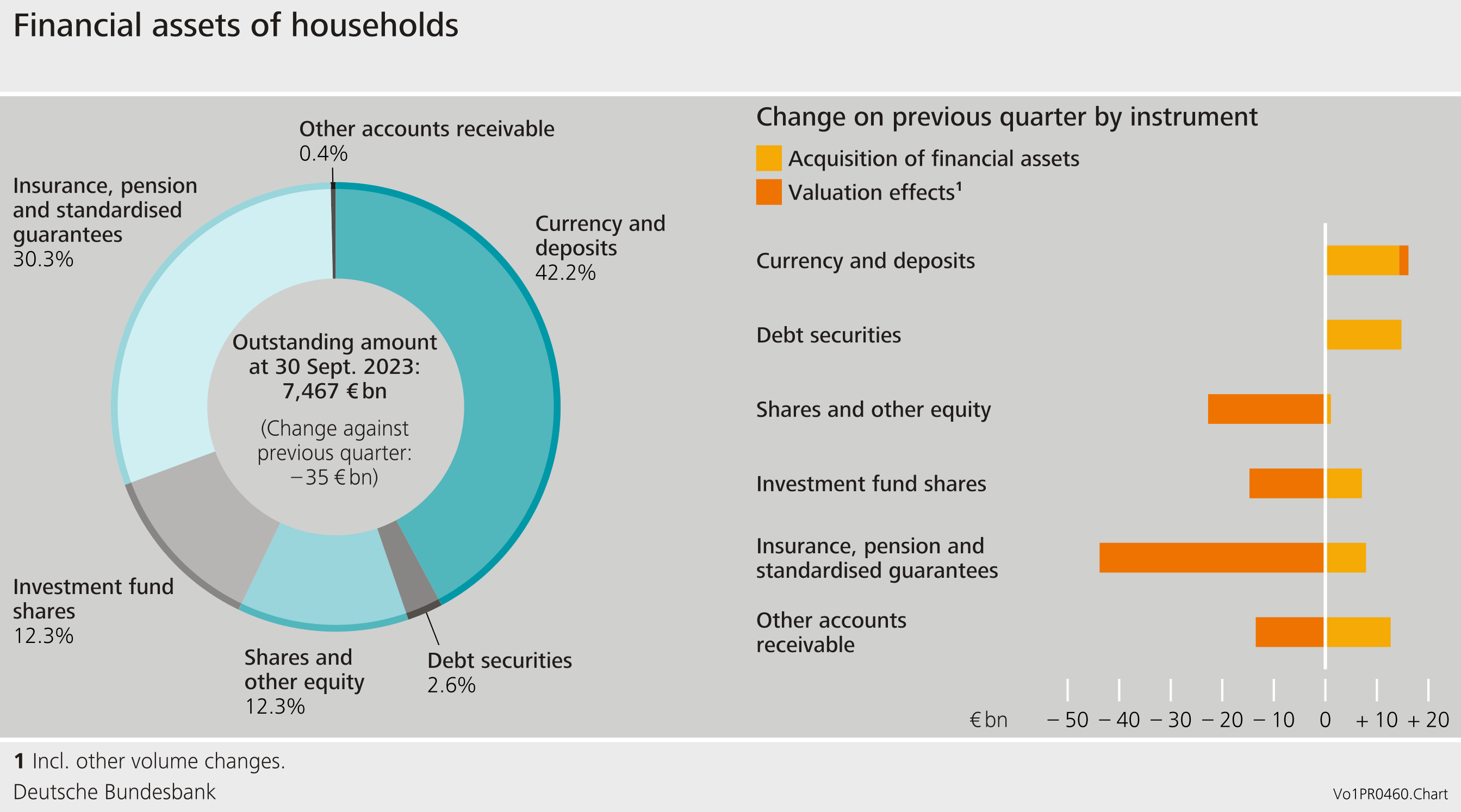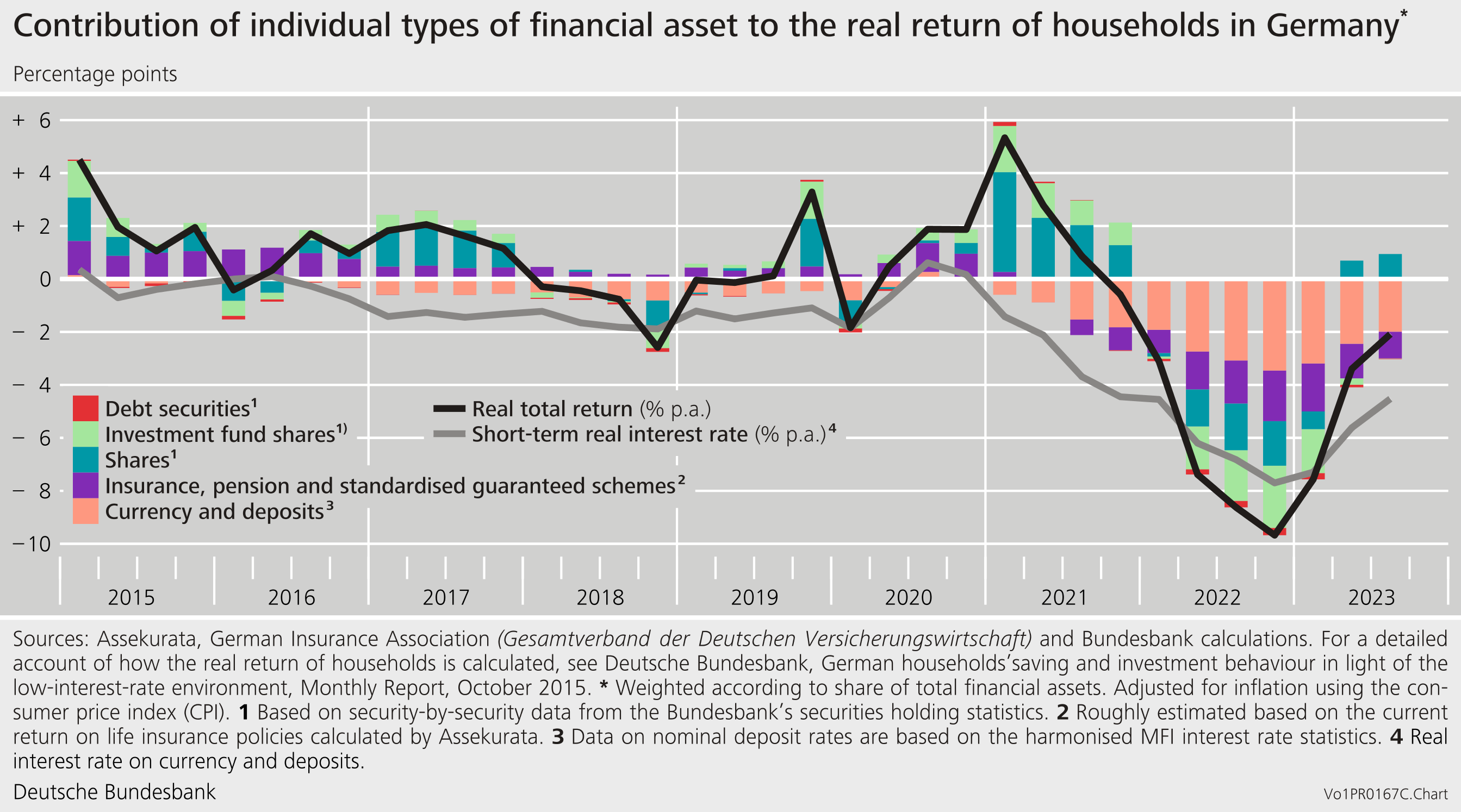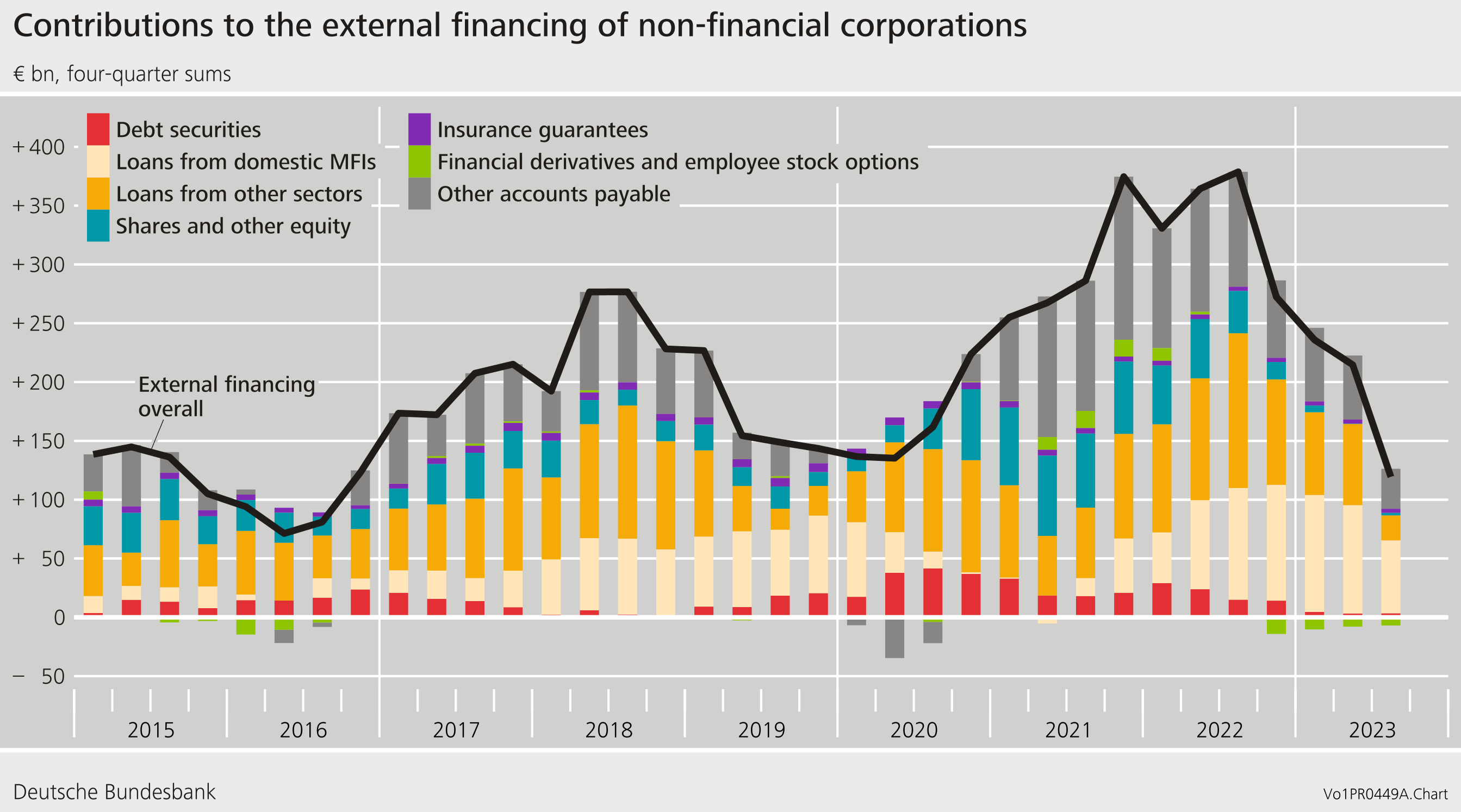Acquisition of financial assets and external financing in Germany in the third quarter of 2023 Results of the financial accounts by sector
Fall in households’ financial assets
Having risen in the previous three quarters, households’ financial assets fell by €35 billion in the third quarter of 2023, standing at €7,467 billion at the end of the quarter. The decline was due to valuation losses of €93 billion, set against an increase of just €58 billion in claims. This was a continuation of the trend decline in annual average claims growth observed since 2021.
Against the background of higher interest rates, the third quarter of 2023 saw households continuing the investment pattern they had exhibited in the previous quarters. For example, they further reduced their sight deposits (‑€33 billion) in favour of higher-yielding time deposits (+€44 billion). Households’ net purchases of debt securities were down somewhat on the quarter but, at just under €15 billion, remained well above the average of recent years. Their interest in shares stayed at the low level recorded in the previous quarter. At last report, households had only invested a little over €1 billion net in shares and other equity.
The valuation losses mainly affected households’ holdings of shares and other equity (-€23 billion), insurance technical reserves (‑€44 billion) and investment fund shares (-€15 billion). By contrast, the market value of debt securities held by households remained virtually unchanged.
Negative real total return on financial assets, but upward trend continues
The real total return, i.e. adjusted for inflation, on households’ financial assets represents the actual return on financial assets for households. Its computation is based on the period-specific asset structure. The real total return has been negative since the end of 2021 but has been on an upward trend for the past three quarters. This increase is partly due to the positive annual contribution from shares. As in the previous quarter, the real total return was above the short-term real interest rate.
Household liabilities continued to show little movement. Following an increase of €7 billion, they amounted to €2,150 billion at the end of the quarter. As in the previous quarters, this very subdued growth in historical terms was mainly due to the small growth in loans for house purchase. The marked decline of 0.6 percentage point bringing the debt ratio down to 53.0% was thus attributable to the nominal increase in aggregate output.[1] Taken together, households’ net financial assets fell by €43 billion to €5,317 billion in the third quarter.
The Bundesbank has recently begun providing additional data on the distribution of household wealth.
External financing of non-financial corporations down significantly
Following a slight recovery in the previous quarter, the external financing of non-financial corporations fell to €13 billion in the third quarter of 2023, its lowest level since the fourth quarter of 2019. The sharp decline in external financing was almost exclusively attributable to particularly weak borrowing, which amounted to €2 billion. On balance, non-financial corporations paid off debt to domestic monetary financial institutions, general government and foreign entities.
In annual terms (four-quarter moving sums), the external financing of non-financial corporations declined further, with the downward momentum increasing significantly.
The liabilities of non-financial corporations fell by €116 billion, standing at €7,963 billion at the end of the third quarter. This decrease was mainly caused by negative valuation effects in shares and other equity (-€164 billion).
The debt ratio fell from 79.0% to 78.0%. This was due both to the reduction in liabilities and to the nominal growth in aggregate output.[2]
The financial assets of non-financial corporations rose slightly, standing at €6,032 billion at the end of the third quarter of 2023. Taken together, non-financial corporations’ net financial assets increased from -€2,108 billion to -€1,931 billion at the end of the quarter.
Owing to interim data revisions of the financial accounts and national accounts, the figures contained in this press release are not directly comparable with those shown in earlier press releases.
Footnotes:
Further information
The Bundesbank has recently begun providing additional data on the distribution of household wealth.
The data on the financial accounts are available at


